#februari 1848
Text
Toevallige ontmoeting met dodelijke afloop
Het was niet eens de échte revolutie van 1848, die van februari, die een eind maakte aan het bewind van de ‘burger-koning’ Louis-Philippe en van Frankrijk weer een republiek maakte (de tweede, na de eerste tijdens de Franse revolutie). In juni van datzelfde jaar kwamen zo’n 20.000 Parijse arbeiders en handwerkslieden in opstand, omdat zij zich verraden voelden. In februari had de massa gestreden…

View On WordPress
#1848#1851#algemeen kiesrecht#Ateliers nationaux#ballingschap#barricade#Bastille#Brest#Commune van Parijs#daguerrotype#duel#Emmanuel Barthélemy#Engeland#Faubourg du Temple#Faubourg Saint-Antoine#februari 1848#Frankrijk#Frédéric Cournet#Guernesey#Guernsey#Herzen#Horace Vernet#juni 1848#Jusqu&039;à ce que mort s&039;ensuive#Ledru-Rollin#Les misérables#Londen#Louis Blanc#Louis Blanqui#Louis-Philippe
0 notes
Text
Did you know that Lon Chaney's Erik is 32 years old?

Yes. This goofy ass man is 32 years old.
So, the silent movie gives a few and undetailed comment about Erik's life before he became the Opera Ghost. A script cheating? Maybe, but it's a 1925 movie with 1 hour and 50 minutes so we excuse that.

Erik was born during the Boulevard Massacre, an event that happened on 23/2/1848, Paris. The main story takes place in 1881 as the original novel, so yeah, Erik is 32 years old and his birthday is 23th February. THIS SILLY MOTHERFUCKER IS ONLY 32 YEARS OLD.
I think 1925 Erik's backstory could be such an interesting thing to explore. He doesn't seem to have traveled to Persia and was born in Paris instead of Rouen, was accused of witchcraft and exiled on an Island by reasons not fully explained... i wonder what could be explored about him. Will i write a fanfiction about his past and a sequel to the 1925 movie?... HELL, YES.
#the phantom of the opera#erik#poto#gothic literature#gaston leroux#lon chaney#poto 1925#the phantom of the opera 1925#universal monsters#silent movies
418 notes
·
View notes
Text
Vagabond
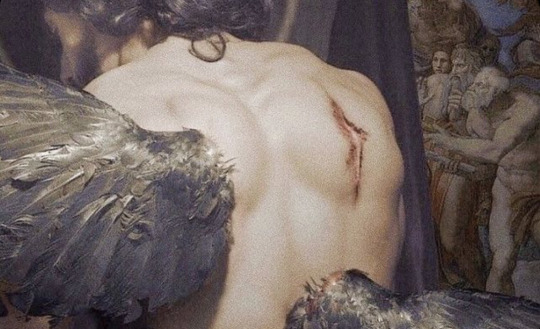
Vagabond — wandering from place to place without any settled home
Poly Lost Boys x GN Reader
Synopsis: Forgiveness is a fickle thing. When four souls find each other, the world finds its equilibrium once more; until the absence of another tips the scale forever. What happens when a familiar face shows itself back at the boardwalk after twenty years of absence?
Warnings: slight angst, lots of historical information in the beginning
Word Count: 3k
By issuing the Declaration of Independence, adopted by the Continental Congress on July 4th, 1776, the 13 American colonies severed their political connections to Great Britain.
You had been ten during the conflicts between America and Great Britain, young and impressionable. Your family came with Puritans, who set sail to America back in 1630. Unlike the Pilgrims, who had left ten years earlier, the Puritans did not break with the Church of England but sought to reform it. All that happened before you were born; your ancestors had settled down and spread their roots into American soil.
You recalled little of the American Revolution; after all, you were very young back then, but you remember December 15th, 1791, vividly. Your mother couldn't stop crying that day, and your father had pulled out the oldest whiskey they had that day. America was finally severed from the tyrannical rule of George III.
You came to understand the significance of those dates more as you aged, growing into a strong individual as you helped your family on their farm. You never intended to marry; it wasn't something you had ever desired or looked forward to. The same year you had gotten married was the day you lost your immortality; both events are related but not necessarily connected. You were introduced to the vampiric community in New Orleans, a city that used the day to sleep off the mistakes you made throughout the rambunctious night.
You had lived through the formation of the Constitution of the United States of America in 1787 when the founding fathers sought to implement more structure into the now independent country.
The infamous whiskey rebellion. American drunks apparently were not too keen about Alexander Hamilton implementing a liquor tax to try and raise money for the national debt; asserting the federal government's power back in 1794.
Only nine years later, the Louisiana Purchase happened in 1803. The small land purchase for only $27 million created room for the states of Louisiana, Missouri, Arkansas, Iowa, North Dakota, South Dakota, Nebraska, and Oklahoma, along with most of Kansas, Colorado, Wyoming, Montana, and Minnesota.
Throughout the 1810s and 1830s, you had moved on from New Orleans and left for New York, seeking human connections and reconnecting with the younger generations. During that time, the Battle of New Orleans in 1815 and the Monroe Doctrine in 1823 seemed to fly past you.
Then, signed on February 2nd, 1848, the Treaty of Guadalupe Hidalgo finally brought closure to the Mexican-American war. At this time, you were no stranger to political conflicts anymore, and the stench of blood and sweat staining battlefields was, unfortunately, no stranger.
Life moved on regardless, no matter the horrid realities life provided. For a short while, life had finally come to a stand-still, guns tucked away as the world in America resumed its development. Until April 12th, 1861, Confederate troops fired on Fort Sumter in South Carolina's Charleston Harbor at 4:30 A.M., A day that changed America forever, the beginning of the American Civil War.
The Emancipation Proclamation, The First Conscription Act, The Battle of Chancellorsville, The Vicksburg Campaign, The Gettysburg Campaign, The Battle of Chickamauga, The Battle of Chattanooga, The Siege of Knoxville. The list continued, and the coppery smell of wasted humanity tainted the air, the wind carrying the cries of victims throughout the nation.
The war ended in the Spring of 1865. Robert E. Lee surrendered the last major Confederate army to Ulysses S. Grant at Appomattox Courthouse on April 9th, 1865.
The number of soldiers who died throughout those four years eventually got estimated to be around 620,000.
Only 47 years later, on July 28th, 1914, the Austrian Archduke Franz Ferdinand was assassinated, beginning the cruel trench warfare of World War I. In early April 1917, America aided the effort to join a war to end all wars. You had entered the war effort, like everyone capable at the time; from soldiers to nurses, everyone gave aid.
On November 11th, 1918, the war ended. Although the Allies won, you found no reason to celebrate. Not when mothers sold their homes since there wasn't a reason to have a multiple-bedroom house anymore, when graveyards overflowed with the dead, when people mourned their losses, when mothers' only answer to their missing sons was a notice declaring their child missing in action.
The stock market crashed in 1929, kicking off the Great Depression that would last for more than a decade.
On September 1st, 1939, Germany invaded Poland. Kicking off World War II and beginning one of the most brutal warfare's, Blitzkrieg. On May 8th, 1945, Germany surrendered. After the atomic bomb was dropped on Hiroshima and Nagasaki, Japan surrendered on September 2nd, 1945, and the Second World War came to an end.
The war ended, and the surviving soldiers returned with missing limbs and broken spirits. You were a firm believer that humans were not meant to witness so much death; it tainted them; it dulled them. Although you were a vampire, a creature supposedly made for horror, you could not forget what you had witnessed in only the span of 21 years.
You were 201 years old now, relatively young in the grand scheme of time, but you had lived through a few of the greatest horrors the world had ever seen.
189 years of traversing the lands, you watched grow in a desperate search to find one of your own. Since you were turned and left New Orleans, you had not met a single vampire. You watched with sorrowful wisdom in your eyes as the world passed through you, virginity in people's expressions you wish you had. A gaze untainted by warfare, civil unrest, and brutality.
Although you have met the occasional human to brighten your own world, it did not cure you. Your search was desolate—fruitless.
Your feet had carried you to Santa Carla, the year now being 1963, and just as the five stages of grief had settled on acceptance. You bumped into a group of four rambunctious bikers that would change your life forever. That had been the first time you had met, and you had continued to live together, going on to live through the Civil Rights movement and grieving the assassination of Martin Luther King, Jr.
But on August 12th, 1967, you left Santa Carla. Your absence is only justified by a delicately written letter standing in your place. You had grown to love the boys, but you had lived differently compared to them.
Marko and Paul were younger vampires than you, having been turned while The Great Depression was bulldozing America. Dwanye had been older, abandoning his immortality in the 18th century along with David. All of them possessed the innate ability to move on from the past, a talent you, unfortunately, did not possess.
No matter how hard you tried, you could not find peace or excitement in the future. The uncertainty corrupted you, tormented you and your experiences, so you left. Not with the intent to abandon but to sort out whatever you had to sort out. Away from the prying eyes of those you loved, those who you did not want—couldn't disappoint.
Santa Carla, the town you had never been able to forget. It was 1987 now; twenty years had passed since you had seen the four vampires. You had missed them—a melancholic weight having nestled its way into your heart ever since you left. You regretted the way you had left through a simple letter. A cowardly move; you were wise enough to understand that. But at the time, you couldn't bring yourself to say it to them. How could you? Look someone in the eyes, someone like you—your own pack that never did anything but love you—and tell them you were leaving?
You didn't have the heart, and if you were a little more honest, you didn't have it now, either. But you missed them more than your hurt pride by walking what felt like a walk of shame as you wandered around the busy boardwalk. One thing you never could get used to was the constant shift in fashion, it felt like the ins became the outs overnight, and you never were able to keep up with it.
Bright colors were the most fashionable now, with teased hair and loud makeup. You enjoyed it, your knowing eyes watching over the crowd. The smell of hairspray permeated the air, wafting towards you as you passed people. Bulky and oversized clothes were spotted throughout the crowds, some men and women wearing specific member-only jackets. Ah, it seems the surfer nazis still haven't given up on Santa Carla yet.
The amusement park was new; back in 1867, the boardwalk had small shops littered around—like a market. Originally it mostly sold food and groceries, fish caught fresh from the sea, and farmers selling their produce.
How has the pier changed so significantly? If it wasn't for the bold, attention-seeking sign that said Santa Carla Boardwalk; you would've thought you were at the wrong address. But stepping on those old wooden floorboards of the pier that occasionally creaked or sunk under your feet was an all too familiar feeling. The smell of salt, rotting seaweed that had washed onto the shore, and the fresh street food made you feel all too at home.
It felt like you had never really left.
Your appearance had changed quite a bit since you left Santa Carla, so you didn't expect either the boys or Max to really recognize you. But although you were willing to stay under the radar for the boys, Max was another story. He was a head vampire, a coven leader, and therefore needed to be notified of your presence.
Entering Max's video store made you feel nostalgic, the same old grimy bell still hanging atop the doorframe signaling your arrival; you had been the one to put that there to originally annoy Max. You were surprised he kept it. The wooden floorboards and furniture gave off a distinct, homey smell. You had been there when the store was built, and the shiny coating across the floors now had grown mat, occasional wood panels brighter in color than before.
"I never thought I'd meet the day I saw you walk through those doors again."
Turning around, you met the stern gaze of Max. His outfit made you smile, a desperate attempt at blending in with the crowd. Max was always a stickler for blending in; if he had no intention of turning you; you had no business knowing who; or rather what, he was.
"It's good to see you."
"I'm flattered, but I doubt that I am the sole reason you returned." Max always carried that knowing tone, as if he's watched out every move you'd make before you made them. It reminded you that Max had a coven before the boys and you, one he rarely conversed about. Perhaps Max really had seen this turn out before, but analyzing that surprised expression, you could only assume who had left never did come back.
"How right you are," You sighed, shoulders dropping as you hopped onto the cashier counter. It was before opening, meaning you and Max had some time to chat privately.
"Twenty years is a long time," Max hummed, a low and almost chiding tone. "What made you come back?"
"To us, it isn't," You weakly argued back. The cumbersome feeling, or rather an awareness that you were in the wrong, was nearly unbearable. You were smart enough to understand that denial was a fruitless endeavor, and yet you couldn't help but let those desperate attempts escape you.
"For people waiting for you, it's an eternity." Max sighed in a calm but chiding tone. Although Max never did have to scold you the way he did with the boys, from not committing arson to preventing fights. Max instead focused his guidance towards you on a more emotional level, the morality; a bit ironic being taught by a vampire—but he did his best.
You glanced outside, through the glass walls of Max's shop, watching the bustling crowd pass you. Twenty years to a vampire was nothing, but somehow the short span of time felt arduous. Why did you come back?
"I never intended on staying away forever. I knew that when the time was right, I'd return." You explained, stealing a quick glance at Max. The older man had a frown etched onto his face, eyebrows furrowed as his own gaze lingered on the rambunctious humans outside. So unaware of the constant and unrelenting passage of time. It was cruel to be immortal; the passage of time no longer hindered you. But emotions are bendable and are the only aspect of ourselves that remains from who we were. Emotions were mortal.
"Santa Carla has changed, Y/N. It is not what you left behind; they are not the same as they were alongside you." Max recalled, his voice disapproving.
You knew Max was correct; you knew deep in your wrenching and twisting gut. You jumped off the counter, your feet hitting the floor like gravity had shifted around you, sinking your body into the floor. "I know," you knew; perhaps the boys didn't even want to see you; they could curse you out and send your name to hell for all eternity. They deserved to do it too.
But they loved you once, and perhaps you can't help shake the feeling that they might love you again this time too.
Max sighed, walking over to his front door and twisting the closed sign around, and pronouncing the store now open. Each tap of his foot, synced with his steps, was like a thundering echo inside you. It prompted you to get up and to provide closure for the others. You reach the door, opening midway before Max leaves you with some parting advice.
"I hope you find what you came here for, Y/N. But the time might be right for you now, but it might not be for them."
You nodded, not looking back as you walked out of the store. The air was warmer, humid from the ocean breeze mixing into the air, the notorious assassin for any styled and teased hair due.
Laughter was one of your favorite sounds. As cliche as that might sound, it felt rejuvenating to hear. Whether it was a loud cackle mimicking the call of a hyena or a high-pitched wheeze or whistle. There was a beauty in people's expressions, how their noses tended to scrunch up, or how others held their stomachs and nearly doubled over. Laughter was infectious, and you loved observing the dopamine spread to others. Strangers connecting over a similar sense of joy; there was a beauty in it.
The boardwalk was filled with it, people brushing shoulders against shoulders as they walked. Groups cackling and shoving each other as they enjoyed the youngness of the evening. Music booming from different directions, punks blasting the newest rap or metal music, hippies tuning out to a gentle jam, but the loudest seemed to be a distant concert down the boardwalk and closer to the pier. Like a bee sensing some honey, you followed. Dodging the occasional passerby, ducking out of the way from shop owners lugging their merchandise around.
The music got louder, and a small thread of excitement seemed to push you further, faster. Your small stroll transformed into a quickened step, your ears guiding you and your eyes following the crowd. The music was loud; a tight smosh-like pit had formed before the stage where people grind and brushed against each other to the beat of the music.
Looking around, you scanned the faces of teenagers and young adults. There was an eager but dreaded nervousness to your gaze at the thought of seeing a face that looked familiar. But it wasn't your eyes that caught their presence, but rather your sense of smell.
Copper.
Although it was harder to pick up when the wind stills its prancing, the occasional breeze led you further towards the pier. Away from the smosh pit, and where people stood to enjoy the music but not risk getting mulled over by a hormonal teenager.
There they stood, strikingly familiar. Although some of the fashion had changed, most of their originality stayed intact. That tiny red flag tied around Dwayne's waist was something the two of you had stolen from a stingy bar owner back in 1964; Markos jacket still had all too familiar patches sewn into its denim fabric; Paul still wore those bracelets you gave him, and David wore the most prominent reminder of you, his oversized coat.
The wind picked up around you, a cold and mocking breeze flowing through your hair and betraying your presence to the four men you had left behind all those years ago. One by one, heads lifted, smiling ceased, and laughter died. Although you had spent years preparing yourself for this moment, nothing felt so gut-wrenchingly real than standing before them.
How do you look someone in the eyes after you've abandoned them?
How do you move past that moment when the world around you stills and halts. When you lose yourself in the blear of the world when mortality reaches its hand around your heart and squeezes. A vice-like grip, a feeling blooming within your chest so heavy–so unspeakable. When you see those eyes, recognize the sorrow behind them and realize you were the perpetrator. You were the one who put that agony, that sadness there.
The burden of your actions ties itself around your throat like a noose, tight and unyielding, as you realize the cruelty was done by none other than yourself. And there is no way, in any shape or form, you could reverse the damage you've done. Pain is immortal, it might yield to its throbbing, but it never forgets.
A world with your boys back in 1967 exists now only in your memory. The four men, cold as the autumn waters, were your reality now.
"Hello, boys."
#the lost boys 1987#poly lost boys x reader#tlb#the lost boys marko#the lost boys david#the lost boys dwayne#tlb x reader#tlb paul#tlb david#tlb marko#tlb dwayne#dwayne tlb#paul tlb#marko tlb#david tlb#laddie tlb#star tlb#the lost boys star#the lost boys x reader#the lost boys#tlb fanfic#tlb x you#tlb headcanons#tlb imagine#the lost boys paul#the lost boys michael#tlb michael#michael x reader
474 notes
·
View notes
Text
hey i’ve got an ap euro project so for data, which rébellion in france do you guys think les misérables took place during?
if you don’t know just guess based on the dates
(for reference the french revolution began in 1789)
pls let me know in the tags why you think it’s that time
321 notes
·
View notes
Text

The painting: Claude Monet (French, 1848-1928) • Women in the Garden • 1866 • Musée d’Orsay, Paris
The Dress: Day Dress • American • 1862–64 • White cotton piqué with black soutache • The Metropolitan Museum of Art, New York
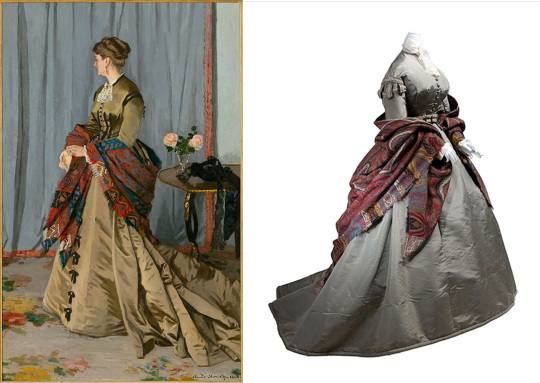
The Painting: Claude Monet (French, 1848-1928) • Portrait of Madame Gaudibert • 1868
The outfit: French ensemble • 1865/67 • Gray silk faille with cashmere shawl from India • Usually worn over the shoulders or in the crook of the arms • Metropolitan Museum of Art
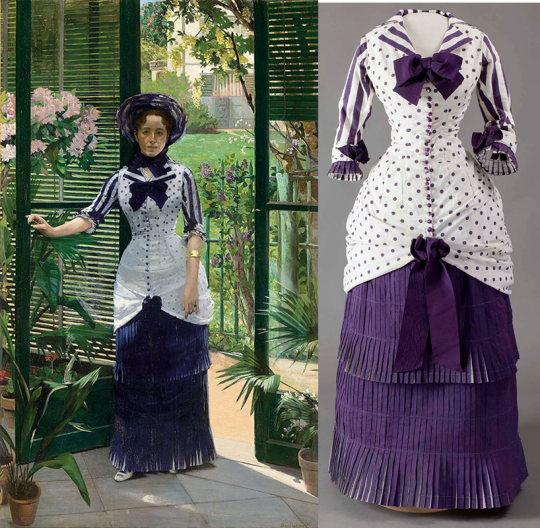
The painting: Paul-Albert Bartholomé (French, 1848-1928) • In the Greenhouse • 1881 (the sitter is Bartholomé's wife)
The dress: Sewn from white cotton printed with purple stripes and dots, this summer gown was made by an unknown French seamstress around 1880.
These three paintings and their companion outfits were part of a large exhibition, Impressionism, Fashion, and Modernity, at The Metropolitan Museum of Art, New York, February, 2013.
#art#painting#art history#impressionism#art exhibitions#fine art#paul-albert bartholomé#claude monet#dresses in paintings#fashion history#historical fashion#historical clothing#19th century women's fashion#the resplendent outfit#art blogs on tumblr#oil painting#the metropolitan museum of art#french artists#museum aesthetic
56 notes
·
View notes
Photo

The Polish revolts of the 19th century
🇵🇱 "Wielki atlas historyczny", éd. Demart, Varsovie, 2023
by cartesdhistoire
In 1815, the Congress of Vienna gave Russia the majority of Polish territories called the "Kingdom of the Congress". Krakow, which benefits from the Austro-Russian rivalry, is independent.
In 1830, when the Tsar decides to send Polish troops to fight the revolutionary troubles in France and Belgium, an uprising broke out in Warsaw, and then wins the entire kingdom. The "November uprising" quickly turns into open war, which the insurgents finally lose, who lack foreign support and that of small peasantry.
Then, Patriotic Actions (June 11 & Nov 29) 1860) murderous repressions (February 27th. and April 8, 1861). In October 1862, the head of the civil government announces an uprising of recruits, which primarily affects patriotic activists. This raft marks the beginning of an uprising, generalized but disorganized; evolving into a guerrilla, it is crushed by the Russian army (January). 1863 - June 1864).
The kingdom already lost in 1841, its currency, the złoty, to the benefit of the ruble, then, in 1847, the Napoleon code to the benefit of Russian law and, in 1849, its system of weight and measurements ceased to exist. It is directly incorporated into the Russian empire as the "Vistula Country", a purely geographical name that emphasizes the will to deny its Polish character. Many insurgents are deported to Siberia and their lands confiscated. Russian becomes the official language, all universities are russified, Orthodox Christianity is promoted state religion. The Catholic Church sees its property confiscated, its monasteries closed, its bishops jailed or deported (there hasn't been a single in 1872) and a huge Orthodox Cathedral is built in the heart of Warsaw. A drastic police regime makes any form of cultural activism or armed uprising impossible.
In the Prussia Grand Duchy of Poznan, an uprising took place in the spring of 1848. After his failure, the autonomy, already limited, of the Grand Duchy is abolished.
53 notes
·
View notes
Text
While the barricade is still holding on, Hugo decides that this is his last chance to write about other barricades which he ordered to be taken by siege in June 1848. To make sense of what is going on, I read a chapter about Hugo in Jonathan Beecher’s Writers and Revolution: Intellectuals and the French Revolution of 1848 (2021). “Victor Hugo never forgot what he saw and did between June 22–26. Unlike our other writers, he participated in the fighting, and he did so on the side of the government.” Sigh.
This is where his lengthy explanations about the differences between uprisings and insurrections from 4.10.2 become relevant. He genuinely believed that everything that was going on in February 1848, before the abdication of Louise Philippe was revolution (insurrection), and what followed in June was uprising against the Republic. It was “a revolt of the people against itself.”
The problem was: people had legitimate causes to rebel. “Once settled in the Assembly, Hugo was immediately confronted by the question of the National Workshops. Like many on both the right and the left, he believed the Workshops were a disaster. They produced nothing and were “an enormous waste of resources”… he urged that they be closed… He apparently believed that by voting to dissolve the National Workshops, he was not voting to shelve the question of unemployment. He was wrong.” Moreover, when workers erected the barricades and the confrontation began, “Hugo seems to have convinced himself that the best way to limit bloodshed was to defeat the insurrection rapidly. For the next three days he became a tiger, “haranguing insurgents, storming barricades, taking prisoners, and somehow remaining alive.”
According to an account from a member of the National Guard, Hugo was acting suicidally: “This man... was M. Victor Hugo, a representative for Paris. He was unarmed and nonetheless he led us; and while we took cover behind houses, he alone kept to the middle of the street. Twice I tugged at his sleeve, telling him: “You’ll get yourself killed!” “That is why I am here.”” But this was because he believed that he was acting under divine protection.
During these days, Hugo was not able to contact his wife and his mistress. He heard rumours that his house was burnt down, but finally found out that it was not true: “When he finally got back to the Place des Vôsges, he found fourteen bullet holes around carriage entrance, but everything in the house was intact: rugs, furniture, silverware, wall hangings, ancient swords and muskets, and above all his manuscripts. A leader of the insurgents, a school teacher and a reader of Hugo, had even led tours of the house for other insurgents.” The last detail is heartbreaking.
In this chapter, Hugo conveys his point of view on the events of June 1848, infusing them with symbolic images of two barricades: both quite eerie and ominous. He is exploiting his talent of horror writer again: “The Saint-Antoine barricade was the tumult of thunders; the barricade of the Temple was silence. The difference between these two redoubts was the difference between the formidable and the sinister. One seemed a maw; the other a mask.”
The sad thing is that after this chapter with its context in Hugo’s biography, it is hard to read his depiction of other barricades from other time without thinking of him as a hypocrite. This is Hugo — an embodiment of controversy.
Siege of the barricade during the June days of 1848:

#les mis letters#lm 5.1.1#les miserables#hugo's involvement in the june days of 1848#historical context
76 notes
·
View notes
Photo

On this day, 21 February 1848, the Communist Manifesto, by Karl Marx and Friedrich Engels was published. Translated into over 200 languages, and widely read by workers across the world, it remains one of the most influential texts ever written. Its chapter 1 begins with a note on history: "The history of all hitherto existing society is the history of class struggles. "Freeman and slave, patrician and plebeian, lord and serf, guild-master and journeyman, in a word, oppressor and oppressed, stood in constant opposition to one another, carried on an uninterrupted, now hidden, now open fight, a fight that each time ended, either in a revolutionary reconstitution of society at large, or in the common ruin of the contending classes… "The modern bourgeois [capitalist] society that has sprouted from the ruins of feudal society has not done away with class antagonisms. It has but established new classes, new conditions of oppression, new forms of struggle in place of the old ones." * We have available a new translation of another key work by Marx, Critique Of The Gotha Program, which offers the fullest elaboration of his vision for a communist future, and corrects some errors with previous translations: https://shop.workingclasshistory.com/products/critique-of-the-gotha-program-karl-marx https://www.facebook.com/workingclasshistory/photos/a.296224173896073/2214858952032576/?type=3
287 notes
·
View notes
Photo
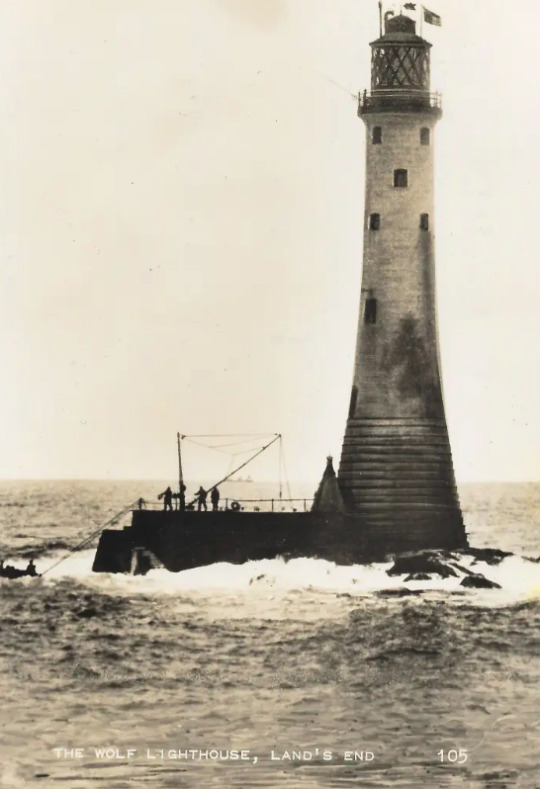
Vintage postcard of the Wolf Rock lighthouse, Cornwall
The fragile pencil of Wolf’s Rock tapering to a hostile sky, the empty miles of restless ocean...
in S.H. Burton, The coasts of Cornwall (Werner Laurie 1955)
Situated between Cornwall and the Isles of Scilly, the Wolf Rock is a small plug of phonolitic lava formed during the early Cretaceous period. Fissures in the rock are said to produce a howling sound in gales, hence the name.
The current lighthouse is the fourth structure to have stood on the rock – the third was a conical marker of cast iron and concrete rubble, completed in 1848 and still visible on the jetty. Forty-one metres (135 ft) in height, the tower is constructed from 3296 tons of dovetailed granite blocks prepared at Penzance. It took eight years to build, from 1861 to 1869, due to the treacherous weather conditions that can occur between the mainland and the Isles.
In February 1948 Wolf Rock became the first ocean rock lighthouse to be resupplied by helicopter. Three keepers had been on duty in the lighthouse for 101 days (the normal shift was 60 days) and due to constant stormy weather were running seriously low on supplies.
The light, which can be seen from Land's End by day and night, has a range of 23 nautical miles and was automated in 1988.
image and quotation via here, text abridged from there and from here
84 notes
·
View notes
Text

Louis Confort Tiffany Born on February 18, 1848
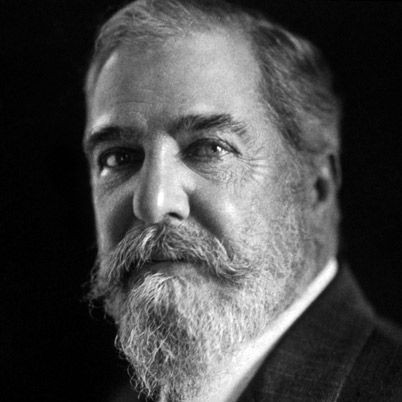
Louis Comfort Tiffany would become a master of his craft. Throughout his lifetime, the US Civil War occurred, the Victorian era and Industrial Revolution of America came and went, and many inventions were created that completely changed the standards of living. Despite the wars and quarrels, Tiffany lived through a relatively progressive era of America. As a child, his parents, Charles Lewis Tiffany (the founder of Tiffany & Co.) and Harriet Tiffany, sent him to the Pennsylvania Military Academy and later the Eagleswood Military Academy. After his graduation he declined the opportunity to go to college in order to start his journey as a professional artist


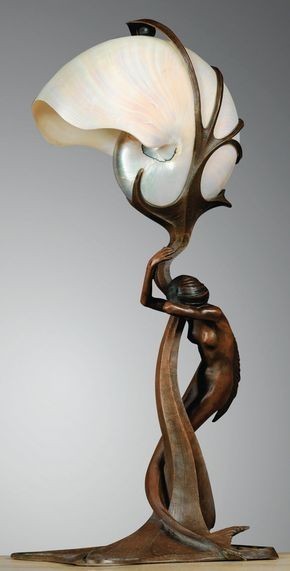


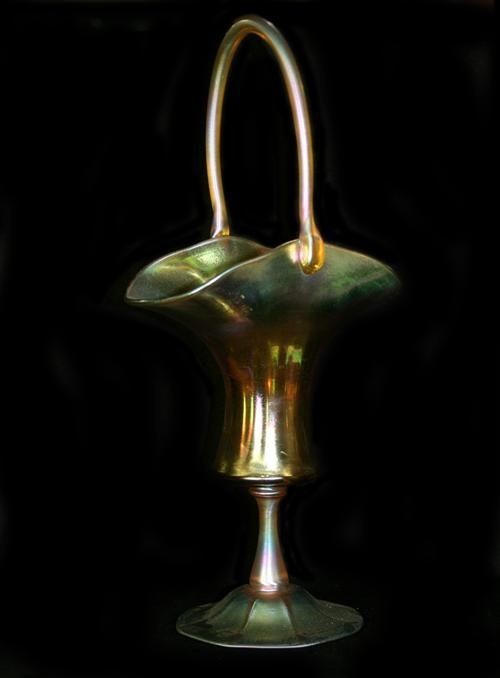
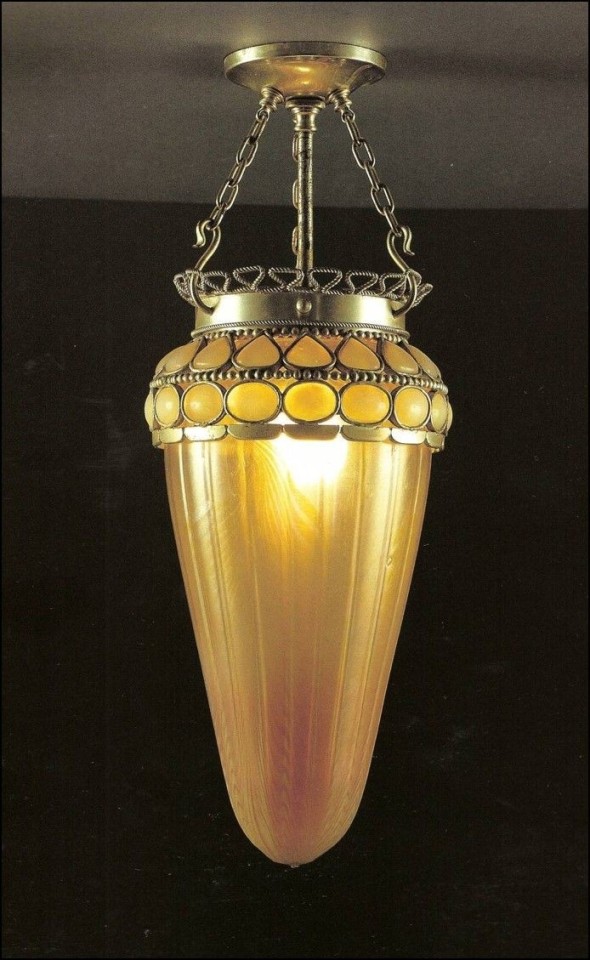

166 notes
·
View notes
Text
Marat Resources Masterpost:
Author's Note: This list is limited to Marat's own works and less-negative portrayals from various historians. There are ample books and historians that depict Marat in a negative way that are easy to find. There has been a bit of work done to show Robespierre in a less negative way in the field, but most of the works about Marat that don't just echo Thermadorian propoganda are much older (like pre-Cold War). Also, in attempt to make this as accessible as possible, most of these sources are public-access or can be found through JSTOR.
I'll be adding more dates and sources as I progress in my own studies, but I hope this offers at least a starting point.
Marat's Own Works:
Pre-Revolution: Scientific and Medical Works
Essay on Gleets (Gonorrhea) (1775) and An Inquiry Into the Nature, Cause, and Cure of a Single Disease of the Eyes (1776) (English Translation from 1891)
Recherches Physiques sur le Feu (English: Research into the Physics of Fire) (1780)
Découvertes sur la Lumière (Discoveries on Light) (1779)
Recherches physiques sur l'électricité (Research in Physics on Electricity) (1782)
Mémoire sur l'électricité médicale (1783)
Discoveries of M. Marat,... on fire, electricity and light, confirmed by a series of new experiments. (1779)
His French Translation of Newton's Optics (1787)
Pre-Revolution: Political/Other Works
A philosophical essay on man: Being an attempt to investigate the principles and laws of the reciprocal influence of the soul on the body. (1773)
De l'homme ou des principes et des lois de l'influence de l'ame sur le corps, et du corps sur l'ame. (1775)
Plan de législation criminelle. (1780)
The Chains of Slavery: LES CHAÎNES DE L'ESCLAVAGE (1791 French Edition)
Chapter 1 Introduction
Chapter 2 Avilir les peuples.
Chapter 3 Diviser la nation.
Chapter 4 Des esprits satiriques.
Chapter 5: Vains efforts du peuple.
Chapter 6: De la guerre étrangère.
Chapter 7: Coups d'etat.
The Chains of Slavery (1774 English Translation)
Early Revolution:
Offrande à la Patrie (Offering to the Nation) (first published anonymously in February 1789)
"Supplément de l'Offrande" (1789)
L' Ami du Peuple:
L' Ami du Peuple (September 1789-1793)
L' Ami du Peuple continued
Some Specific Parts of L' Ami du Peuple:
"Jews, Executioners, and Actors" (from No. 77, December 25, 1789)
"Illusion of the Blind Multitude on the Supposed Excellence of the Constitution" (from No 334, January 8, 1791)
“Freedom is Lost” (from No. 625, December 14, 1791)
“What Men Are More Vain than the French?” (from No 671, July 12, 1792)
"To Camille Desmoulins"
"Corruption of the National Assembly"
"Denunciation of Necker"
"On the King's Dismissal of Necker"
"Conjurations of all Enemies to the Revolution with Lafayette"
"Observations of the Hate Raised Against Him"
Post-humously Published Works:
The Adventures of Young Count Potowski, Vol. 1 (published in 1848)
The Adventures of Young Count Potowski, Vol. 2
From Historians on Marat:
Marat: THE FRIEND OF THE PEOPLE (Bougeart, 1865?)
"The Radicalism of Jean Paul Marat" ARTICLE (Gottschalk, 1921)
Jean-Paul Marat: The People's Friend (Bax, 1900)
Jean-Paul Marat: A Study in Radicalism (Gottschalk, 1927)
Jean-Paul Marat: Tribune of the French Revolution (Conner, 2012)
Jean Paul Marat: Scientist and Revolutionary (Conner, 1997)
#french revolution#french rev#jean paul marat#marat#resources#masterpost#l'ami du peuple#frev#sources
116 notes
·
View notes
Note
what got you so into the french revolution?
When I was in school for medieval art history, I did a lot of work on saints and their martyrdoms, particularly how the viewers of art depicting suffering imagined suffering, and how the agony/eroticism of those feelings induced a sort of memetic spiritual euphoria. Which means that I spent a ton of time looking at images of executions. I've seen them all: beheadings and sexymen shot full of arrows, saints barbecued or flayed or eaten by wild animals, criminals broken on the wheel -- all the classics. Or at least, I thought I had, until I encountered this triptych in my senior year of college:

This, by Belgian artist Antoine Wiertz, is The Visions of a Guillotined Head, painted in the late 1840s. Wiertz was a symbolist, and spent a great portion of his career drawn to the macabre, never more notably than on the occasion that inspired this painting.
In February 1848, two notable French criminals were due to be executed by the state. The guillotine was of course still in use as a method of capital punishment (and would be until the 1970s), and Wiertz was curious as to what a so-swiftly severed head felt and saw. He wasn't the first; since the guillotine's invention there had been legends of heads that blinked and blushed and tried to speak after separation. Luckily, Wiertz had a friend who was a hypnotist (as you do). Timed to the moment of the execution, he had his hypnotist pal put his soul "into rapport" with the dead criminal, and claimed that he entered the head itself as it fell.
He later recalled his experiences at some length in writing, but since we're talking about me, here is the important passage, dictated as he "felt" the horror of execution:
A horrible buzzing noise, the sound of the blade descending. The victim believes that he has been struck by lightning, not the axe. Astonishingly, the head lies under the scaffold and yet still believes it is above, still believes itself to be part of the body, and still waits for the blow that will cut it off. Horrible choking! No way to breathe. The asphyxia is appalling. It comes from an inhuman, supernatural hand, weighing down like a mountain on the head and neck. A cloud of fire passes before his eyes. Everything is red and glitters.
Now comes the moment when the executed man thinks he is stretching his cramped, trembling hands towards the dying head. It is the same instinct that drives us to press a hand against a gaping wound. And it occurs with the dreadful intention of setting the head back on the trunk, to preserve a little blood, a little life.
This fucked me up so bad.
I am well aware that consciousness after having your spinal cord severed is a done deal. I was aware of this in college. But there was something about this artist's act of imaginative empathy that compelled me, for the first time, to think about the guillotine in particular. About the mechanical wait, not being pushed off a drop or axed while kneeling, about being slid through on a board, of seeing the basket beneath you, already full of heads. Maybe even heads you know.
I imagined it so hard that I made myself sick and couldn't go to class for two days.
The reason I studied what I studied wasn't because I was ghoulish. In fact, I'm a little squeamish. It was because in the experience of pain, we are all deeply individualized, but entirely, helplessly human.
I laid in bed and thought about the small number of humans who I, an educated layman, knew had been guillotined: Marie Antoinette, obviously; Louis XVI; and (in what felt like black historical irony, given what I knew of his day job) Maximilian Robespierre.
It felt intrusive to have intimately imagined their last, most private moments, without really having any idea about them at all. Better to start at the end and work backwards, I thought. So I started reading.
Robespierre, decapitated by guillotine when he was thirty-six. That's the manner of death. How did he meet his death? In terrible pain, I learned. Why? Because he'd had half his jaw blown off the night before. Jesus, why? Because he'd (maybe probably) shot himself. Why?
It turns out, if you keep doing that, a piece at a time, for years, you can learn a lot about someone's life. And, relatedly, in long and branching paths, you can find your way into every nook and cranny of what burned through France at the end of the 18th century.
#aren't you glad you asked#hey emily why were you so obsessed with executions and the horror of suspended pain in the first place?#well yes you see I was raised evangelical and read foxe's book of martyrs at the tender age of eight and it drilled a channel into my brain#hey emily did something happen to you in college that made you hyperfocus on the gossamer threads between life and death?#would you look at the time!!!!#anyway this was probably not the answer you expected but it is what it is#I have seen the past and I foresee the future
94 notes
·
View notes
Text
A Deadly "Peacemaker" and Unlikely Matchmaker: The Worst First Date Ever.
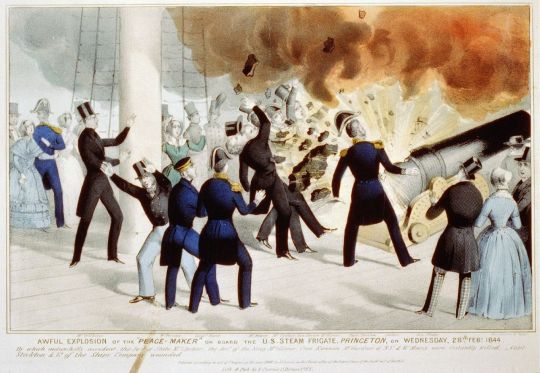
On February 28, 1844, Dolley Madison was far removed from her time as First Lady of the United States, but still held on to her spot as Washington's Greatest Hostess. She was the widow of a bona fide Founding Father, James Madison -- the 4th President of the United States and principal author of the U.S. Constitution and Bill of Rights -- but he had left the White House almost 27 years earlier and died in 1836. However, Dolley -- now 75 years old -- remained a darling of the Washington social scene. Though she often struggled financially, Dolley Madison continued entertaining guests in the nation's capital and helped organize social gatherings around the city, acting as a sort of guest hostess wherever she visited and whenever she was invited -- and she was invited everywhere. Now, as the first auguries of spring began their awakening in-and-around Washington, D.C., Dolley helped plan a cruise down the Potomac River on the newly-built USS Princeton -- a showcase vessel for the United States Navy which happened to be one of the most advanced warships of its time. Nearly 70 years after the Declaration of Independence, Dolley Madison was still the life of the party and an ideal person to help plan a celebration aboard the USS Princeton, just as she'd been doing throughout the entire life of the young American nation.

[Dolley Madison, daguerreotype by Mathew Brady in 1848, four years after the Princeton explosion.]
Launched just six months earlier, the Princeton was the U.S. Navy's first propeller-driven warship and its Captain, Robert Field Stockton, was proud of his charge. A cruise to demonstrate the ship's speed, capabilities, and weaponry to the Washington elite would be advantageous to the Navy's growth and to Captain Stockton's ambition. Besides Dolley Madison and the Princeton's crew of 178 sailors, the ship welcomed over 350 guests, including dignitaries such as Secretary of State Abel Upshur, Secretary of the Navy Thomas W. Gilmer, Secretary of War William Wilkins, Postmaster General Charles A. Wickliffe, Senator Thomas Hart Benton, and other diplomats and members of Congress. The most celebrated guest on the Princeton that day, however, was President John Tyler, who had also invited a young woman he had been romantically interested in, Julia Gardiner, and her father, David Gardiner, an influential New York lawyer and former State Senator.
Everyone on board the Princeton had underlying reasons for taking the cruise down the Potomac. For some, it was to see the Princeton for themselves. For others, it was because it was the place to be for politicians and diplomats on that February day. Some took the cruise for the opportunity to observe others, and some took the cruise in order to be noticed. The big draw, however, was a chance to see the Princeton's two large guns -- weapons so big and powerful that they were given their own names: the "Oregon" and the "Peacemaker" -- being fired. Both of the guns were impressive, but the "Peacemaker" was an amazing spectacle. At the time, it was the largest naval gun in the world. The ship was so new and the "Peacemaker" was so potentially devastating that, as of the day of the Princeton's cruise down the Potomac, the weapon had been fired no more than five times, according to Captain Stockton.
In February 1844, John Tyler was entering the final year of a contentious, controversial, and accidental Presidency. Elected as Vice President alongside William Henry Harrison in 1840, Tyler spent only a month in the Vice Presidency before President Harrison died in office. On April 4, 1841, Tyler became the 10th President of the United States, but his succession was not a smooth one. Harrison had been the first President to die in office and the Constitution was not specifically clear about Presidential succession. To many, including everyone in President Harrison's Cabinet, Tyler was still the Vice President and only assumed the duties of the Presidency, not the title or the privileges (such as living in the White House). At his first meeting with the men Harrison had appointed to the Cabinet, the Cabinet all but insisted that they would rule by committee and that Tyler had no more power or influence than, say the Postmaster General (which was a Cabinet-level position until 1971). Many Americans felt that Tyler was merely "Acting President," and that he was to defer to the will of the Cabinet on all issues.
Tyler vehemently disagreed and the manner in which he assumed office set a precedent that was followed by all future Vice Presidents and was eventually cemented into the Constitution. Tyler declared that he was not the Vice President or the "Acting President," but that Harrison's death had propelled him directly into the office of President of the United States to serve out the remainder of Harrison's elected term with the same powers and duties and privileges that come with the office. Tyler moved into the White House and, when his Cabinet balked at his assumption of power, he accepted the resignation of everyone but his Secretary of State, Daniel Webster (Webster eventually resigned in 1843).
President Tyler's troubles did not disappear once Harrison's hand-picked Cabinet departed or after Tyler settled into the Executive Mansion. The slavery question was tearing the nation further and further apart by the day. When Tyler won election in 1840 as Harrison's Vice President, he did so as a member of the Whig Party, but when it came down to Tyler's personal political ideology he was all over the political spectrum. As a younger man, he supported Thomas Jefferson and the Democratic-Republicans and he supported Andrew Jackson during Jackson's first term before Tyler became a Whig. Upon his Vice Presidential nomination, there were questions about Tyler's Whig credentials, but the Whigs needed a strong Southern balance on the ticket and accepted Tyler. But now that General Harrison was dead, President Tyler's independence frustrated his party, which felt that he was not sufficiently Whiggish. With former President Andrew Jackson out of the picture and retired in Nashville, and with Whigs in control of Congress and the White House, the party attempted to establish another Bank of the United States. The Whig Congress pushed through a bill creating a new Bank of the United States, but President Tyler definitively broke ranks with the party that had nominated him for national office and vetoed the bill. Twice. So, just months after assuming the Presidency, Tyler was expelled from the Whig Party and remained a President without a party until he left the White House in 1845.
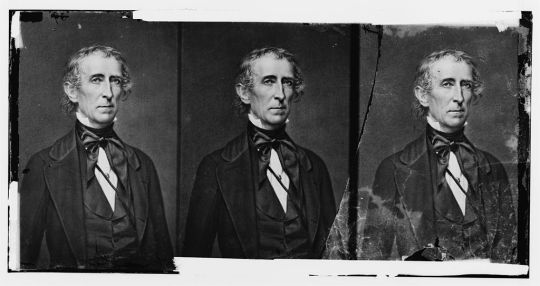
Now, on a warm day at the end of February 1844, Tyler was thinking about whether or not he would support the annexation of Texas. The President also thought of romance. In September 1842, Tyler's wife, Letitia, died in the White House after suffering a stroke. Tyler was still grieving when he began courting Julia Gardiner in January 1843. Tyler had met Julia while his wife was still alive, but he didn't become smitten with her until after his wife's death. Tyler and Julia kept their relationship guarded from the public and the President was even secretive about it to his (very large) family. Part of the reason for his reluctance to be open about his feelings was because Letitia had only been dead for a few months when he started dating Julia. However, a bigger reason was Julia's age. When they began dating, Julia Gardiner was just 22 years old. The 52-year-old President was wary about how his children (he and Letitia had seven children who lived to maturity) would feel about him dating a woman who was five years younger than his oldest daughter.
The age difference also worried Julia's family. Julia Gardiner was the daughter of David Gardiner, a wealthy New York lawyer and former New York State Senator. She was born in 1820 on an island in the Long Island Sound named after her family, and had everything that she wanted or needed while growing up on Gardiner's Island. Julia was beautiful and much in demand by the eligible bachelors of the East Coast. After meeting President Tyler, Julia first tried to reject his advances, but she was certainly intrigued by the powerful and charming Virginian. For his part, Tyler was madly in love with Julia and he first proposed to her in late-1843. Julia's mother did not approve of her daughter marrying a man 30 years older than Julia, so Tyler didn't get an answer. By inviting Julia and her father to accompany him on the USS Princeton, John Tyler hoped to show David Gardiner that he could impress the wealthy New Yorker and demonstrate that he could be a wonderful husband to Julia.
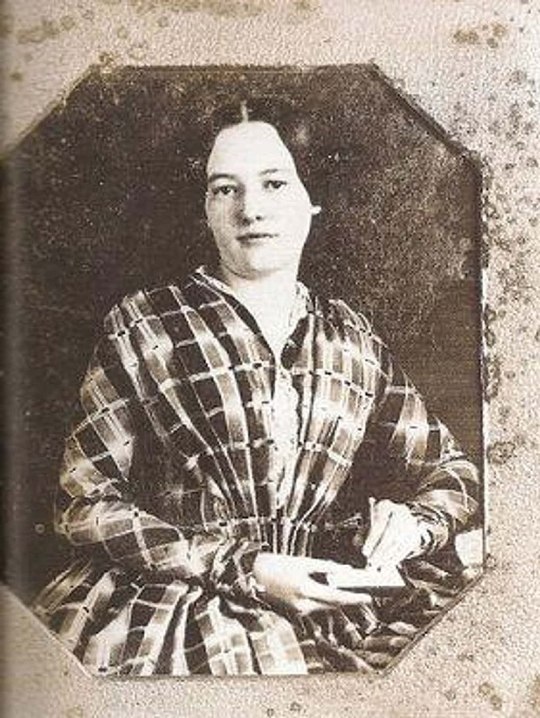
[Julia Gardiner Tyler, around the time of the Princeton explosion and her marriage to President Tyler, c. 1844]
•••
Guests gathered at the Washington Navy Yard as ferries transported them across the Potomac River to Alexandria, Virginia, where the USS Princeton was anchored and ready for the afternoon cruise down the Potomac. As dignitaries boarded Captain Stockton's ship, they marveled at the size of the two guns on deck and examined every inch of the 164-foot warship. Music was provided by the United States Marine Band -- "The President's Own" -- and food was served below deck as the Princeton began its leisurely cruise down the Potomac. As guests explored the Princeton and watched the historic sites on both shores of the Potomac pass by, the massive "Peacemaker" gun was fired to the delight of everyone on the ship. The rounds fired by the powerful "Peacemaker" were capable of traveling up to three miles. As the warship cruised down the river the rounds that were fired were aimed at ice floes in the distance which were breaking apart as the afternoon sun warmed the Potomac. The cruise continued, with men mostly on the deck and pretty much all women below deck where food and drinks flowed freely, conversation was genial, and some of the guests were gleefully singing and clearly enjoying themselves.

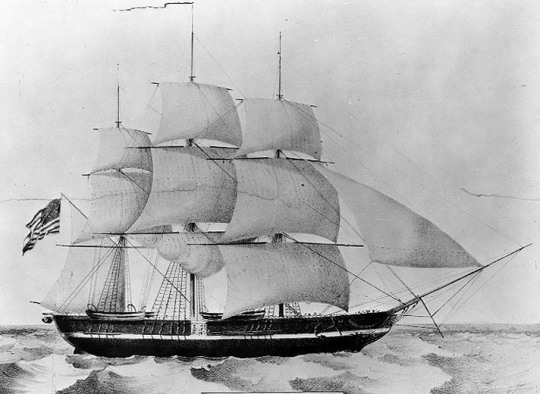
When the Princeton reached Mount Vernon and George Washington's sprawling estate came into view, the ship fired another round from the "Peacemaker" in tribute the first President and then turned around for the return trip to Washington, D.C. The Princeton's passengers had gathered below deck for celebratory toasts and to listen to the impromptu singing concert taking place in the salon. At around 4:00 PM, some of the men requested a chance to witness the "Peacemaker" being fired again, but Captain Stockton demurred, telling the men, "No more guns tonight." However, one of the men who wished to see the "Peacemaker" fired once again was Thomas W. Gilmer, the man who had become Secretary of the Navy just 10 days earlier -- a man who just happened to be Captain Stockton's superior. Gilmer's wish was something akin to an order to Captain Stockton, so Stockton headed to the deck and had the gun prepared to be fired once more.
Many of the men began heading upstairs to witness the firing of the "Peacemaker" while the women mostly remained below deck and continued with their songs and conversations. President Tyler was heading up the gangway plank towards the deck when he was told that his son-in-law, William Waller, the husband of his daughter Elizabeth, was about to sing one of Tyler's favorite songs. Instead of heading to the deck, the President headed back into the salon and was handed a drink. Upstairs, men crowded around the giant "Peacemaker" for one last demonstration of its firing power.
On the deck, Secretary of War William Wilkins jokingly told the spectators, "Though I am Secretary of War, I do not like this firing, and believe I shall run!" before moving to the far side of the Princeton. The remainder of the guests were close to the "Peacemaker" and the big gun was ready to be fired. The Princeton was about 15 miles downriver from Washington, D.C. and two sailors took the final steps for firing the weapon.
Suddenly, at 4:06 PM, a massive explosion rocked the Princeton and the deck was obscured by white smoke and an eerie silence. President Tyler rushed up to the deck to investigate what had happened, but what he found was a horrific scene. The "Peacemaker" -- the largest naval gun in the world -- had exploded at the breech. The powerful explosion tore part of the ship's deck and the "Peacemaker" broke into red-hot pieces of iron that flew into the crowd of spectators. Nobody downstairs was injured, but the deck of the Princeton was a place of horror. Eight people had been killed and 17 were seriously injured, including Captain Stockton and Senator Thomas Hart Benton. As President Tyler reached the deck, the silence turned to anguished screams and confusion.
The President fought through the smoke and found that the toll was high. Secretary of State Abel Upshur was dead -- literally disemboweled by the blast. Navy Secretary Gilmer was dead. The Princeton's Commander Beverly Kennon and two Princeton sailors were dead. American diplomat Virgil Maxcy was dead. President Tyler's slave, Armistead, who had requested and been granted permission from Tyler to view the gun as it was being fired was dead. And, finally, David Gardiner -- the father of the woman that the President hoped to marry -- was also killed by the blast, his arms and legs severed from his body by the force of the explosion. A tearful President was devastated by the loss of two of his senior Cabinet members, and he headed back down below deck to notify the women about what had happened. With dozens of victims and witnesses screaming, crying, and/or in shock throughout the ship, there was an attempt to keep most of the passengers below so that they didn't see the gruesome scene on the deck.
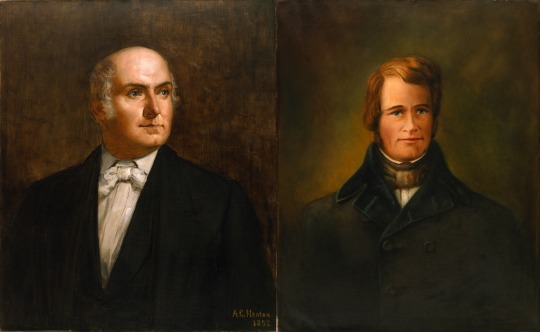
[Secretary of State Abel Upshur and Secretary of the Navy Thomas W. Gilmer, who were both killed by the explosion on Feb. 28, 1844.]
The smoke-filled deck of the Princeton was covered with blood, dismembered limbs, dead bodies, and stunned survivors, many of whom had been wounded by pieces of red-hot, iron shrapnel from the gun or pieces of human beings torn apart by the explosion. Throughout the ship, ears were ringing and people were rendered temporarily deaf by the sound of the blast. Below decks, the women who had accompanied the Princeton awaited more news from above, which quickly trickled downstairs. Someone yelled, "The Secretary of State is dead!" and the news did not improve. When Julia Gardiner found out that her father was among those who had been killed in the blast, she fainted -- directly into the arms of President Tyler. Dolley Madison, who had seen much in her 75 years -- during the War of 1812, she barely escaped the White House shortly before British forces captured Washington and burned the Capitol and the Presidential Mansion -- was certainly stunned by the tragedy aboard the ship, but she quickly did her best to comfort the Princeton's passengers who were shaken and distressed.
As the USS Princeton limped back to Washington, D.C., John Tyler comforted Julia Gardiner as best as he could. For the President, his pleasure cruise with the woman he hoped to marry and her wealthy father could not have gone worse. Now, David Gardiner was literally laying in pieces on the deck of the Princeton as Tyler -- who was also returning to Washington without a Secretary of State or Secretary of the Navy -- tried to console Gardiner's young daughter, but she remained unconscious until the ship arrived back in Alexandria, Virginia.
When the Princeton arrived at Alexandria, President Tyler physically carried Julia Gardiner from the wounded warship. On the gangplank, Julia finally awakened in the President's arms, and as she later said, "I struggled so that I almost knocked both of us off the gangplank. I did not know at the time, but I learned later it was the President whose life I almost consigned to the water." President Tyler had Julia taken directly to the White House where she spent the next few days recuperating under the watchful eyes of the President and his large family.
The bodies of Julia's father, the two dead Cabinet members (Secretaries Upshur and Gilmer), the Princeton's Commander Kennon, and the diplomat Maxcy remained on board the Princeton on the night of February 28th. The injured went to hospitals and homes around the capital city. The next day, Washington was in official mourning as the word of the tragedy spread and the signs of mourning -- black crepe hanging on the White House and other public buildings --were displayed. As Washington mourned, the bodies of Gardiner, Upshur, Gilmer, Kennon, and Maxcy were transported to the White House, where their flag-draped caskets rested in honor in the East Room. (It's safe to assume that President Tyler's slave wasn't awarded the same honors -- when the bodies were removed from the Princeton, they were all placed in magnificent mahogany caskets, except for Armistead, who was placed in one made from cherry. The President did reportedly give Armistead's mother $200.)
After two days of lying in state in the East Room of the White House, Gardiner, Upshur, Gilmer, and Kennon were transferred to St. John's Episcopal Church, where all of official Washington showed up to pay their respects at their joint funeral (Maxcy's family took his remains for a private funeral and burial shortly after his body arrived at the Executive Mansion). It was a solemn occasion -- one of the biggest tragedies to strike the United States up to that point, and a significant loss to President Tyler, both professionally and personally. Tyler was mourning two important members of his Cabinet, and the woman he hoped to marry was burying her father after he had been killed in the most gruesome manner imaginable on a cruise that Tyler had invited him to take.
The funeral started with an ominous and unfortunate signal: the firing of loud artillery across from the Executive Mansion could not have been a pleasant reminder to those who had survived the tragedy on board the Princeton a few days earlier. The bodies of Upshur, Gilmer, Kennon, and Gardiner were taken to Congressional Cemetery following the funeral and buried there, although Gardiner was later exhumed and reburied on Gardiner's Island in New York. After narrowly escaping death or serious injury on the Princeton a few days earlier, President Tyler found himself in danger once again as he left the funeral. Traveling through the busy streets of Washington in his horse-drawn carriage, the President's horses were startled by the crowds and bolted -- leaving Tyler helpless in a runaway carriage until a man bravely rushed out from a hotel entrance and helped stop the carriage.
•••
Being comforted by President Tyler and his immediate family in the aftermath of her father's death changed Julia Gardiner's mind about marrying the much older President. Tyler had done everything possible to console her and make her feel safe in the days after the Princeton explosion. Later, Julia would write that, "After I lost my father, I felt differently towards the President. He seemed to fill the place and to be more agreeable in every way than any younger man was or could be." While the loss of her father was certainly tragic, John Tyler happened to be in the right place at the right time, and, in a strange way, David Gardiner's death may have helped spark the romance between the President and Gardiner's daughter. Several weeks after the Princeton tragedy, Tyler asked Julia's mother (who herself was nearly a decade younger than the President!) for her blessing to marry Julia and Mrs. Gardiner approved of the union.
Still, the marriage was not without controversy. The wedding took place on June 26, 1844, just a few months after the Princeton explosion. Julia and her family were still in mourning for Mr. Gardiner, so the wedding was solemn and low-key. Plus, the President's family -- particularly his daughters from his first marriage -- were reluctant to accept his new bride. After all, Tyler's first wife had died less than two years earlier, and Julia Gardiner was about the same age as Tyler's daughters; in fact, she was five years younger than Tyler's oldest daughter. One more unique aspect of the wedding was that this was the first time an incumbent President of the United States had ever gotten married while in office. Normally, it would be blockbuster social news, but the President's wedding was kept strictly private.
Accompanied only by his son, John Tyler III, the President and Julia Gardiner were married at the Church of the Ascension in Manhattan (which is still standing today, at Fifth Avenue and Tenth Street in Greenwich Village) on June 26, 1844. Very few people even knew that the President was in town until after the wedding when they heard the salute from the guns of warships in New York Harbor as he and his new First Lady departed the city (again, maybe firing the guns wasn't the greatest idea for this particular couple at that particular time?). According to one of the only eyewitness accounts of the wedding, published in The New York Morning Express the day after the nuptials, the bride was given away by her brother and and "robed simply in white, with a gauze veil depending from a circlet of white flowers wreathed in her hair." After the ceremony, the wedding party held a dinner at Lafayette Place before the President and Mrs. Tyler departed the city by steamer, staying the night in Philadelphia, before proceeding back to Washington on a special train the next day.
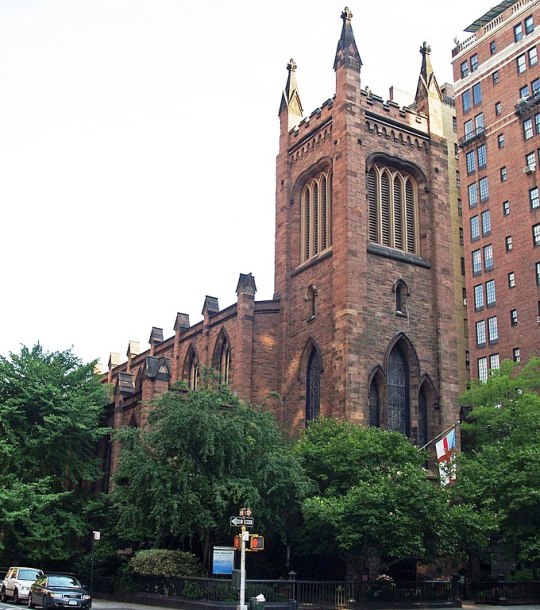
[The Church of the Ascension in Manhattan where President Tyler and Julia Gardiner were married on June 26, 1844.]
When President Tyler left office in 1845, he and his wife retired to Tyler's plantation in Virginia, Sherwood Forest. They had seven children (in addition to the seven surviving children from Tyler's first marriage) and remained happily married, despite the 30-year age difference between the husband and wife. In January 1862, the Tylers headed to Richmond for Tyler's inauguration as a member of the Confederate House of Representatives. Tyler was the only former President who did not remain loyal to the Union during the Civil War. On January 18th, the 71-year-old Tyler died in Richmond's Exchange Hotel, likely due to complications from a stroke and was buried in Richmond's Hollywood Cemetery with Confederate honors. Widely considered a traitor in the North, official notice of Tyler's death wasn't given until 1915 when Congress finally erected a monument near his grave.
Julia Gardiner Tyler lived until 1889, but remarkably, as of 2024, one of President and Mrs. Tyler's grandsons is still living. With seven children (the last of which died in 1947 -- 157 years after John Tyler's birth!), the Tylers were blessed with a wealth of grandchildren and Harrison Ruffin Tyler (born in 1928) is still alive today (his brother, Lyon Gardiner Tyler Jr., died in 2020). In the 1970s, Harrison Tyler purchased and restored his grandfather's beloved Virginia plantation, Sherwood Forest, and often spoke about his family's unique place in history until his health started to fail in recent years.
•••
As for the USS Princeton, well, it never truly recovered from the "Peacemaker" explosion. Captain Robert Field Stockton was absolved of blame for the tragedy and went on to fame in California during the Mexican-American War (he has a city named after him near Sacramento), and later was elected a United States Senator from New Jersey. The Princeton participated in engagements in the Gulf of Mexico during the Mexican-American War, but its hull was found to be rotting after the war ended. It was broken up for scrap in Boston and the "Peacemaker's" twin gun -- the "Oregon" -- can be seen today on the grounds of the United States Naval Academy in Annapolis, Maryland.
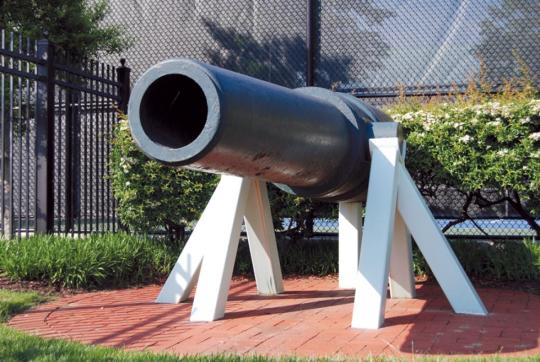
[The "Oregon" gun from the USS Princeton, now on display at the United States Naval Academy in Annapolis, Maryland.]
During World War II, a new USS Princeton was commissioned. A 622-foot-long aircraft carrier, the new Princeton engaged in action in the Pacific Ocean. On October 20, 1944 -- 100 years after the explosion of the "Peacemaker" during President Tyler's Potomac River cruise -- the modern Princeton was attacked by a Japanese dive bomber in the Leyte Gulf and 108 sailors were killed. Even the Princeton's descendants seem to be cursed.

#History#USS Princeton#USS Princeton Explosion#John Tyler#President Tyler#Tyler Administration#Julia Gardiner Tyler#David Gardiner#First Ladies#First Families#Presidential Marriages#Presidential Relationships#Robert Field Stockton#Abel Upshur#Politics#Political History#Military History#WWII#Dolley Madison#Thomas W. Gilmer#Tyler Family#Cabinet of John Tyler#Tyler Cabinet#Presidential History#Presidential Politics#Princeton Explosion#1844 Explosion of the Princeton#U.S. Navy#Naval Accidents#U.S. Naval History
17 notes
·
View notes
Text
THIS DAY IN GAY HISTORY
based on: The White Crane Institute's 'Gay Wisdom', Gay Birthdays, Gay For Today, Famous GLBT, glbt-Gay Encylopedia, Today in Gay History, Wikipedia, and more … February 5



1848 – Joris-Karl J.K. Huysmans (d.1907), born in Paris of a French mother and Dutch father, was an important figure in the Aesthetic and Decadent movements, who exemplified a style of homosexuality at a pivotal moment in the emergence of a gay identity.
Huysmans admired the descriptive writing of Charles Dickens, but practiced a form known in France as the prose poem. This genre, which typically emphasized sensation and an elaborate or exotic setting, was perfectly suited to his elegant style and rich vocabulary.
Huysmans was a prolific writer of novels, art criticism, essays, short stories, and prose poems. His most renowned work À rebours, (Against the Grain or Against Nature(1884), celebrated the decadent movement in European art and literature, later to be embraced by Oscar Wilde, Aubrey Beardsley, and others. In this novel, the protagonist, Duke Jean Floresas des Esseintes, embodies the aestheticism found in Wilde.
A wealthy aesthete living a life of pleasure in his country house, Des Esseintes is characterized by his addiction to exquisite sensations, exoticism, flowers, decoration, perfume, and art. Against the Grain ranks with Wilde's Picture of Dorian Gray and Moore's Confessions of a Young Man as important examples of the decadent movement.
It is now considered an important step in the formation of "gay literature". À rebours gained notoriety as an exhibit in the trials of Oscar Wilde in 1895. The prosecutor referred to it as a "sodomitical" book. The book appalled Emile Zola, who felt it had dealt a "terrible blow" to Naturalism
Huysmans maintained a correspondence with numerous writers of his day, including the homosexual symbolist poet Jean Lorrain and the novelist André Gide. Huysmans met Paul Verlaine in the summer of 1884, and in 1904, he edited and prefaced Verlaine's Religious Poetry.
Although Wilde was a more notorious figure than Huysmans, Huysmans influenced several of Wilde's artistic principles, especially those associated with "art for art's sake," "Art Nouveau," "decadence," and "impressionism."


1914 – Born: William S. Burroughs (d.1997) who, In his novels as in his life, was an outlaw and a provocateur. Beginning with Naked Lunch (1959), his fiction was distinguished by violently hallucinatory images, rendered in prose that brilliantly mimics the speech of criminals, redneck sheriffs, bureaucrats, political extremists, and hipsters. A series of later writings applied collage techniques to the novel form. Burroughs always incorporated transgressive sexual imagery and situations into his writing. In this, he went far beyond the acknowledgment, in the 1950s, of his own homosexuality.
Most of his novels contain representations of such practices as auto-erotic asphyxiation and sado-masochism. Primarily a satirist, Burroughs treated both sexuality and language as manifestations of social power — and as sites of conflict.
Born in St. Louis, Missouri, to a wealthy family, William Burroughs studied English, medicine, and anthropology at Harvard and the University of Vienna before becoming addicted to narcotics in the mid-1940s. Following an arrest for heroin and marijuana possession, he fled to Mexico. There, in 1951, he accidentally shot his wife, Joan Burroughs, during a drunken imitation of William Tell. He spent much of the 1950s recovering from heroin addiction and brooding over the act of violence that ended his companion's life.
Life in the underworld of addicts and petty criminals is the basis of his first published novel, Junkie (1953), written in a "hard-boiled" style and published under the pseudonym of "Bill Lee" (his mother's maiden name). During this period, Burroughs started another novel, in the same stylistic vein, describing the gay demimonde; this unfinished manuscript was published, much later, as Queer (1985).
With Naked Lunch (1959), Burroughs abandoned the naturalistic depiction of "outsider" subcultures and began to write in a surrealistic and bitterly satirical mode. This novel incorporated characters and scenarios Burroughs had created while improvising skits to amuse his friends (including Allen Ginsberg and Jack Kerouac, fellow members of the Beat Generation literary group). Often highly scatological, laced with the argot of various underworlds Burroughs had encountered in his travels, the paranoiac and hallucinatory scenes in Naked Lunch treated addiction as a complex metaphor for all varieties of domination and control. The novel was subject to a number of court cases for obscenity.
During the 1980s, Burroughs began performing with some regularity in films and on television, and several recordings have been made of the writer reading portions of his work. David Cronenberg's film adaptation of Naked Lunch (1992) treated the novel as a story of the author's literary and sexual self-discovery. Burroughs's work has been influential for several generations of novelists, poets, performance artists, and feminist and queer theorists.


1942 – Gil Wechsler was the first resident lighting designer at the New York Metropolitan Opera. He lit his inaugural show in 1977 and, over the next 20 years, made days dawn, rain fall and cities burn in 112 Met productions, 74 of them new.
His career also took him to London, Paris and other international centers of opera and ballet. Wherever he was designing, he knew that audiences often didn’t take much notice of his contributions to a production — which was usually the point. “If lighting is good, you really shouldn’t notice it often,” he told Opera News in 1987. “In some operas, however, such as ‘Die Walküre,’ the lighting becomes the show. It should seem natural — it shouldn’t jar, but you should be moved by it.”
He graduated from Midwood High School in Brooklyn and studied for three years at Rensselaer Polytechnic Institute in Troy, N.Y., before realizing that a career in business or finance was not in his future. In 1964 he earned a theater degree at New York University, and in 1967 he received a master of fine arts degree at Yale.
Upon graduating he found work as an assistant to the prominent set and lighting designer Jo Mielziner, and in 1968 he received his first Broadway credit, as lighting designer on the Charles Dyer play Staircase. He would have one more Broadway credit, in 1972, for Georges Feydeau’s There’s One in Every Marriage. Before coming to the Met, he also designed for the Stratford Festival in Ontario, the Harkness Ballet, Lyric Opera of Chicago, the Guthrie Theater in Minneapolis and other leading regional theaters and festivals.
At the Met, Mr. Wechsler worked with Otto Schenk, Jean-Pierre Ponnelle, David Hockney and many other leading directors and designers. Lighting for the Met is particularly challenging because — unlike on Broadway, for instance — the shows change on a weekly or even daily basis. One of Mr. Wechsler’s accomplishments was to develop accurate records of the lighting schemes for each production, so that one show could be swapped for another more efficiently.
Wechsler died on 2021 at a memory-care facility in Warrington, Pa. He was 79. His husband, the artist Douglas Sardo, said the cause was complications of dementia.


1960 – Born: Versatile African-American artist Nayland Blake who creates—in a variety of media—work that reflects his preoccupation with his racial and sexual identities. Interracial desire, same-sex love, racial and sexual bigotry, and the body are all recurrent themes of his increasingly influential art.
Born to an African-American father and an Irish-American mother at a time when such unions were outlawed in many parts of the United States, Blake is a black man by the definition of historical jurisprudence, yet easily passes for white. He grew up on Manhattan's Upper West Side. As a gay man, his sexual identity is similarly subject to either concealment or revelation. A self-described teenage "art nerd," Blake spent his high school years with like-minded friends hanging out in Soho and East Village galleries and lofts, watching experimental film and performances by artists such as Richard Foreman and Jack Smith.
Blake's work first came to national and international attention when it was featured in the 1991 Whitney Biennial and the 1993 Venice Biennial.
In 1995, Blake co-curated a show at the University of California, Berkeley Art Museum entitled In a Different Light: Visual Culture, Sexual Identity, Queer Practice. This was the first major show to exhibit the work of queer artists exclusively. The volume produced from the show has become a standard in queer art scholarship.
Blake's work perennially theatricalizes, and even eroticizes, the characteristically suppressed linkages between interracial desire, same-sex desire, and the overt displays of bigotry and intolerance that customarily greet such transgressions as these.
Among his most famous pieces are a log cabin made of gingerbread squares fitted to a steel frame entitled Feeder 2 (1998). When it went on display, visitors furtively nibbled off bits and pieces of the cabin's interior walls, while the smell of the gingerbread filled the gallery. Another well-known work is Starting Over (2000), a video of the artist dancing with taps on his shoes in a bunny suit made to weigh the same as his lover, Philip Horvitz. The suit was so heavy that Blake could hardly move as he took choreographic directions from Horvitz offstage.
Gorge (1998) is a video of the artist sitting shirtless being hand fed an enormous amount of food for an hour by a shirtless black man from behind. In 2009, a live version of Gorge was staged in which audience members fed Blake.
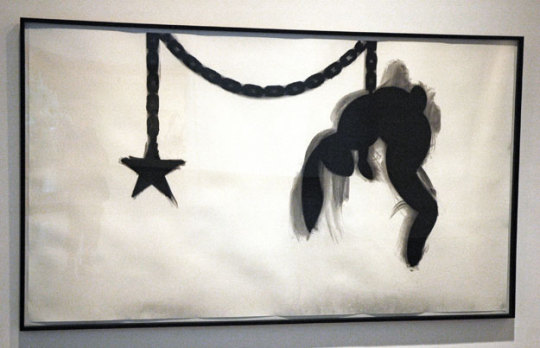
Hung Bunny
hrough Blake's work bounds the recurrent figure of the bunny rabbit, a seemingly innocuous character often given an ominous cast. They variously suggest a youthful naiveté, a sexual precocity, the stereotype of homosexual promiscuity, or a social slipperiness. The last meaning is perhaps best exemplified by Brer Rabbit, the "trickster" of Joel Chandler Harris's "Uncle Remus" tales.
Through his work as an artist, teacher, and curator, Blake exerts an important influence on queer art, art scholarship, and artists.


1993 – Curdin Orlik is a Swiss professional wrestler who competes in Schwingen (a type of folk wrestling native to Switzerland), and an agronomist. Orlik came out as gay in March 2020, making him the first athlete in the sport of Schwingen to come out as gay, and also the first openly gay male active in Swiss professional sports.
Orlik was raised in Landquart, Grisons. He is the brother of wrestler Armon Orlik.
Orlik competes in Schwingen, a form of folk wrestling that is native to Switzerland. Orlin was named "Schwinger of the Week" by the Swiss magazine Schlussgang in May 2019. So far in his wrestling career he has been awarded thirty-five wreaths and has won five festivals. In 2019 he ranked twenty-fourth in the Eidgenössischer Schwingerverband.
He also works as an agronomist.
Orlik was previously married to a woman, with whom he has a son. They later separated. He is the first athlete in the sport of Schwingen to come out as gay, and also the first openly gay male active in Swiss professional sports. Orlik came out in March 2020.
"For far too long I have pushed out who I really am," he said in his coming out interview with The Magazine. "I always knew that I was gay, for sure since I was 12. But I thought: this is wrong, it cannot be.
"I heard things on the school building square [like] 'you gay pig,' 'you faggot.' Or in soccer, 'such a gay pass!' Even when [wrestling]. Sure nobody really meant that, but if you're like that yourself, you think, 'Shit, that's not a good thing.'
Orlik tried to hide the truth, even from himself, even going so far as to get married to a woman. They have a two year old child, but divorced after Orlik realized he couldn't keep up the charade any longer.
"I thought: I don't want to be gay. But it's me. Now it's out."



16 notes
·
View notes
Text
Behold! I've been writing my Spain/France fic. It's something that I've wanted to put to paper for a long time. It's not done yet. But uh... I still wanted to share. Mmm, yes. So, here you go! Have this snippet of things to come.
~~~
Paris, France; 24 February 1848
There is an omen on the horizon.
Spain pushes aside the heavy drapery of France’s flat to peer through the window at it: a plume of devilish smoke that snakes its way upwards into the heavens. It is distant, perhaps fifteen or twenty blocks away, which makes discerning the exact location difficult. Is the Tuileries Palace aflame, where he had spoken with the French king mere days ago? Could it be someplace else that has caught fire, like a guard post or a jailhouse?
A multitude of Parisian rooftops, chimney pots, and elegant blue dormers lie between him and the inferno. Still, it is much too close. In the pale light of a wintery midday, the grey harbinger snarls at him, its smokey teeth rippling with the blazing anger of rebellion and bending in the imperfect glass of France’s Palladian windows.
Spain frowns. He should have left the city long ago. Or, perhaps better yet, he should never have come at all.
16 notes
·
View notes
Text




On February 15th 1848 the Caledonian Railway company opened.
The trains of the Caledonian Company were recognisable by their blue livery decorated with the royal arms of Scotland. At the height of its success in the first half of the twentieth century, the Company controlled almost 3,000 miles of track and had extensive holdings, including hotels, steamers and harbours.
Although the company was supported by Scottish shareholders, the majority of its shareholders were actually based in England. The Caledonian Railway Company also opened a railway which crossed the border between Scotland and England, replacing what had been an arduous journey involving a sea trip via Liverpool in order to reach London.
The Caledonian Railway Company came to an end in 1923, when it was amalgamated into the London, Midland and Scottish Railway. (LMS).
16 notes
·
View notes